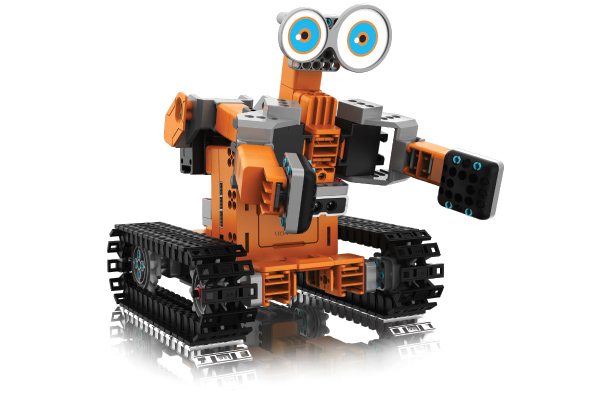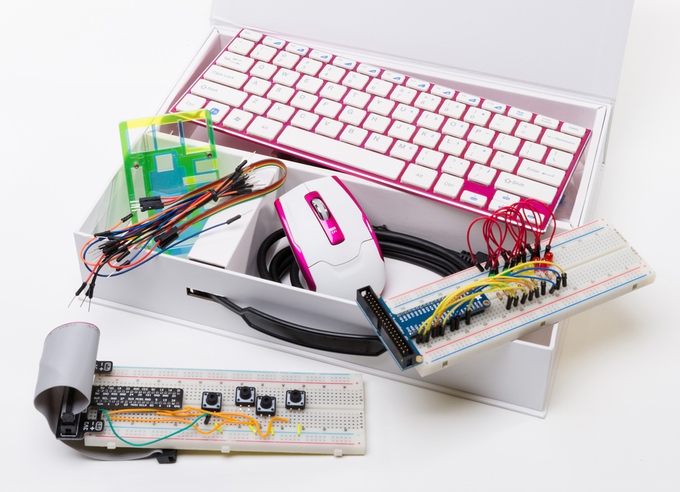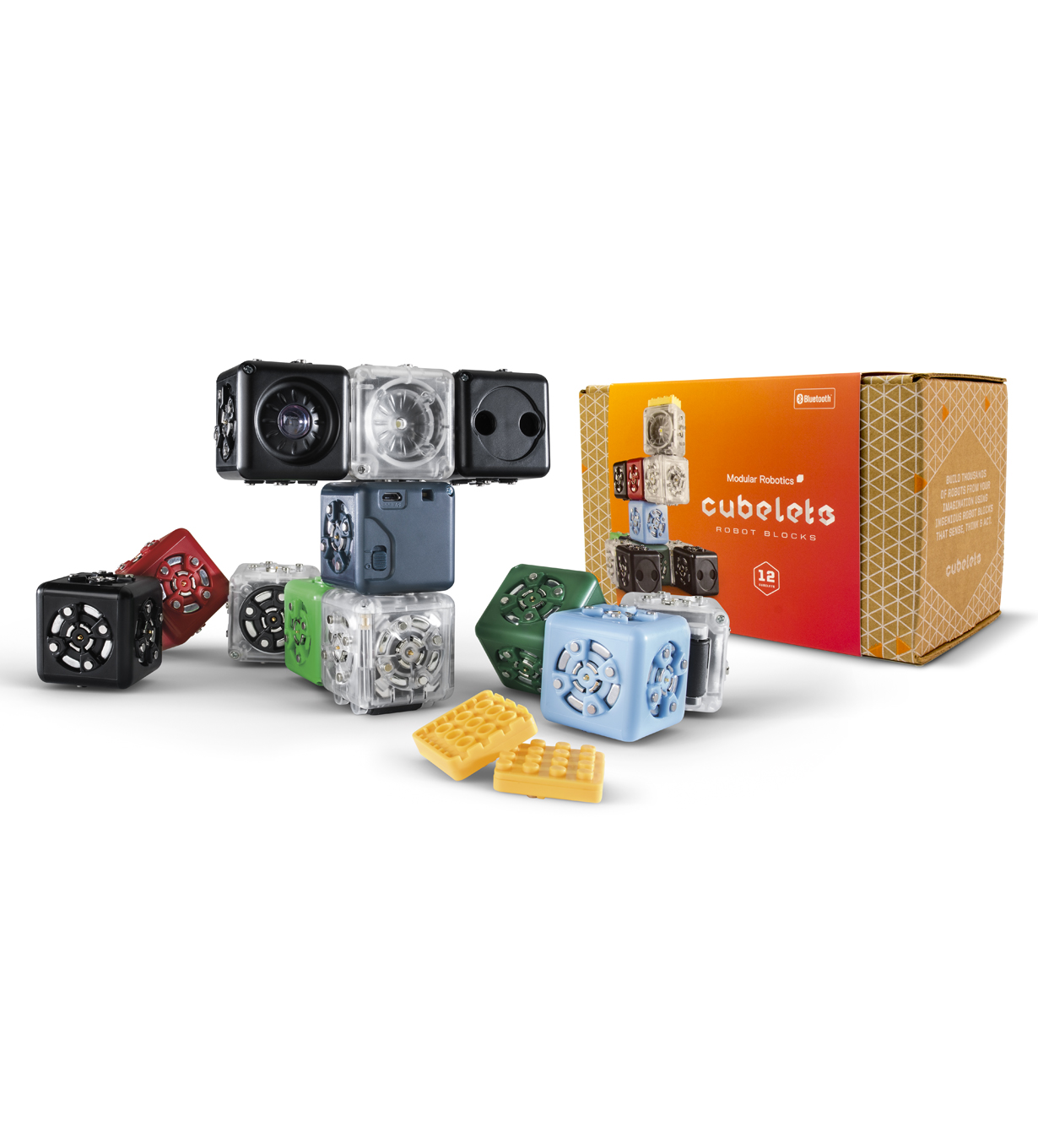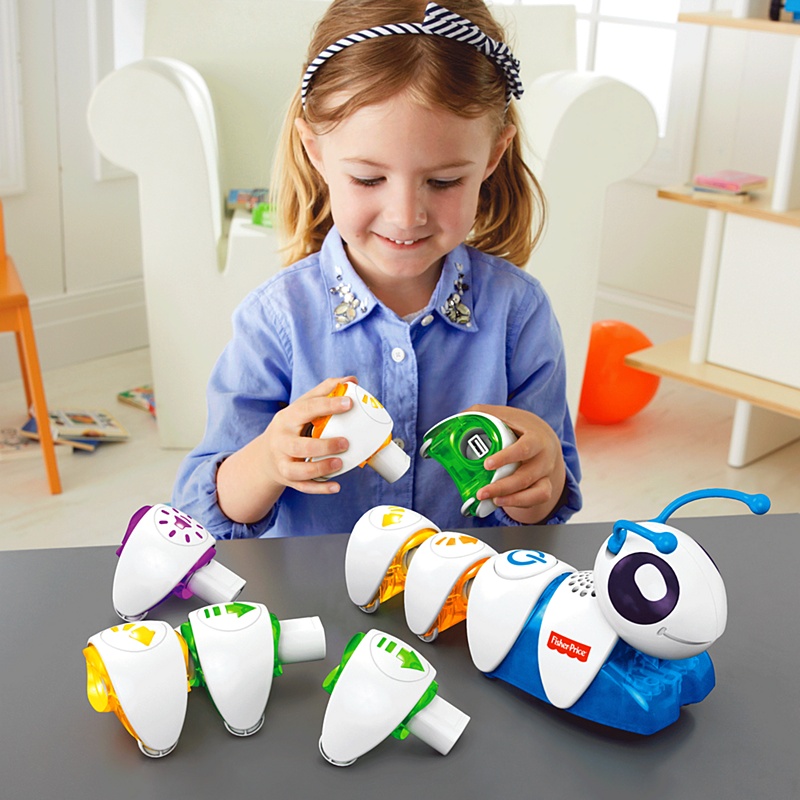As schools (and the Department of Education) encourage children to pursue in science, technology, engineering and math, the toy industry has been looking for ways to both assist and capitalize on STEM’s popularity. And they’re finding that there’s a lot of fun to be had in teaching kids that science and math are more than just memorizing tables and formulas.
The hiccup is, if you’re looking for a STEM toy for your son or daughter, it can be overwhelming. One option is Amazon’s just-announced subscription program called STEM Club, which delivers hand-picked, age-appropriate toys that encourage kids to learn as they play. At just under $20 per month, it guarantees a steady flow of items, but early customer reviews have been mixed.
If you’re more of a take-charge parent who would rather pick and choose STEM toys yourself, we’ve got a few suggestions that will not only engage your kids, but could keep you up late playing with the toys yourself.
Jimu Robot Kit

Robots haven’t quite lived up to the standard Hollywood has set for them, but you’d be hard pressed to find a kid who doesn’t still think they’re cool. Jimu is a build-it-yourself robot that features six servo motors, which act as joints, and about 200 snap-together parts. (Jimu means “building blocks” in Mandarin.)
Once it’s built kids – and parents – can control the robot from an iPhone or iPad, making it walk, dance and shimmy. If they want to dig deeper, kids can dig into the code section, creating a preset series of movements for Jimu using a drag-and-drop interface.
It’s worth noting that Jimu’s Robot can be a challenging build. That’s deliberate, as the company wants this to be an experience kids and parents share.
Buy now: Amazon, $198
Boolean Box

Aimed primarily at girls aged eight and up, this self-contained kit features all the components needed for kids to easily build their own Raspberry Pi computer.
It’s also preloaded with software that makes it easy to learn to code. Within minutes of building the PC, your curious child will be working on digital animation projects and more. The kit comes with its own keyboard and mouse, but you will need a monitor (or TV) with an HDMI input to serve as the system’s screen.
Buy now: Boolean Girl, $143
Circuit Cubes
While many STEM toys revolve around a screen of some sort, these transparent blocks are much more hands-on, letting kids transform everything from their LEGO sets to household objects. Created by startup Tenka Labs, the modules, currently available for pre-order, are a collection of components – battery blocks, switches, relays and tools.
Kids can use those parts to motorize their toy cars, create a small flashlight or invent a noise-maker. Lines on the back of the blocks represent flow of current, so kids will also learn some basics about circuitry as they engineer their imagination. And if they need some inspiration, the company plans to offer instructional videos, showing them how to build objects like a “swimming whale.”
Buy now: Tenka Labs, Price TBD
Wonder Workshops’ Dot and Dash robots

Unlike other STEM toy robots, which often require assembly, Dash and Dot come in ready-to-play condition, making them a bit more approachable for younger kids. Children can immediately begin coding commands for the pair on a smartphone or tablet, making them sing, dance and wander around the house.
Dot, the orb-like robot, is a more basic toy that can be programmed to imitate a Magic-8 Ball or used in a high-tech game of hot potato. Dash, which comes with wheels, is capable of more advanced maneuvers. They can be bought separately (Dot is $50, with Dash running $150) and there are several accessories available (including LEGO-compatible building brick connectors and a ball launcher) that expand their functionality. The pair won Good Housekeeping’s Toy of the Year award in 2015.
Buy now: Amazon, $279.99
Cubelets

Blocks have been a basic childhood toy for centuries. Cubelets just advances the concept. Each of the 12 cubes in this collection serves a unique purpose, whether as a motor or sensor or battery. Together, they can be paired to build dozens of mini-robotic combinations.
Kids will learn the importance of component placement as they create. Putting a “drive” block (which propels creations) in the middle of a combination, for instance, might make it go straight, while putting it in another location could cause it to spin in circles. One of the Cubelets also adds Bluletooth functionality, meaning kids can get some coding experience via a phone or tablet in a drag and drop interface.
Buy now: Amazon, $159.89
Vex Robots Robotic Arm

Got a kid who’s fascinated by assembly lines? This functional, build-it-yourself robotic arm can give them insight into the industrial world without the safety headaches major corporations have to worry about.
The arm can lift objects up to 14 inches into the air and turn 360 degrees. And its claws can rotate objects left and right.
Buy now: Amazon, $44.54
Think & Learn Code-a-pillar

STEM toys aren’t just for big kids. This Fisher-Price creation for preschoolers lets little ones rearrange the pieces of the Code-a-pillar’s thorax and abdomen to alter its course as it scoots around the house and play different music and sound effects.
It’s big and bright and easy for kids as young as three years of age to manipulate, but it still fosters critical thinking and problem solving skills. It’s not coding in the traditional sense, yet it gives kids the building blocks to begin thinking in a programmer’s mindset.
Buy now: Amazon, $38.99
Ozobot

Teach critical thinking skills to kids with this tiny robot that follows black, red, green and blue paths, which kids can create by drawing lines on paper. The ping-pong sized orbs use an optical sensor to determine the color and then execute one of 29 different actions.
The toy also comes with a programming system letting kids set Ozobot’s actions. There are four levels of complexity, letting them progress at their own pace, but ensuring that they constantly keep learning.
Buy now: Amazon, $54.99
More Must-Reads from TIME
- Why Trump’s Message Worked on Latino Men
- What Trump’s Win Could Mean for Housing
- The 100 Must-Read Books of 2024
- Sleep Doctors Share the 1 Tip That’s Changed Their Lives
- Column: Let’s Bring Back Romance
- What It’s Like to Have Long COVID As a Kid
- FX’s Say Nothing Is the Must-Watch Political Thriller of 2024
- Merle Bombardieri Is Helping People Make the Baby Decision
Contact us at letters@time.com